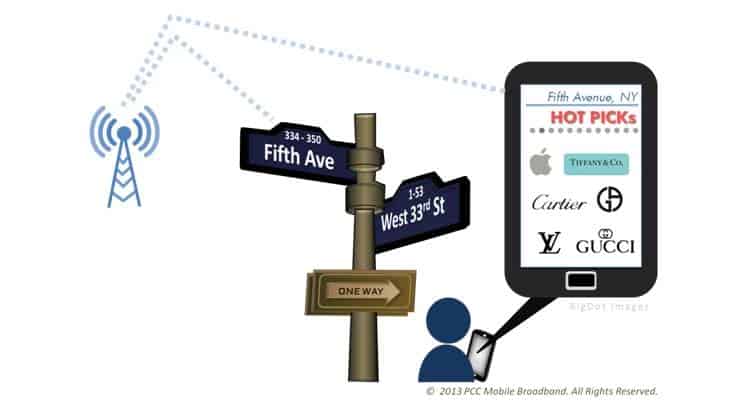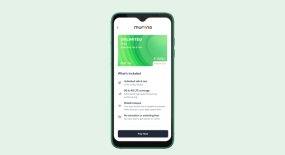With mobile data making up the biggest chunk of revenues raked in by Mobile Operators, one of the key focus within the industry today is how to sustain these revenues and drive further growth in the uptake of mobile data services. In recent months, in their bid to arrest the decline in voice revenues, Operators have started working with OTT players, promoting OTT services, which despite eating into their traditional revenues, are contributing to a higher consumption of data among subscribers. Mobile Operators are thus realigning their mobile data strategies, focusing on increasing data consumption and increasing the capacity of their data networks. With real-time communications and technologies such as Vo-Wi-Fi, VoLTE and WebRTC starting to show more promise of becoming mainstream channels for voice and rich communications, data services will eventually become the core of Mobile Operators’ business.
What Mobile Operators are also realizing at this point is that, unlike voice and text, mobile data service has a higher real-time demand elasticity which means that if the subscriber sees the next 20MB of data he/she consumes delivering immediate value, there is a very high likelihood that the subscriber will take up that 20MB of data. One of the primary reasons for this is the popularity of infotainment services accessed on mobile data networks whereby a simple top-up grants the subscriber immediate access to another 1 hour or 1 day of these services. At the same time, Operators are finding that data consumption fluctuates between weeks, months and throughout the year corresponding to a large number of factors including the availability of content (movie and audio releases), events (concerts, elections, sports and others such as Oscars and Grammys) and festivities. More interestingly, the usage of data fluctuates between different user groups at different times, for example, millennials are very likely to browse a lot of online stores on Black Friday and Cyber Monday compared to those who are 55 and above; while parents with school going children are likely to have a child locator added to their shared plan at the beginning of the schooling season when very young kids are being away from home for the first time.
Given the nature of mobile data business where sales become brisk if you can create and deliver ‘value’ just when the opportunity becomes available, Mobile Operators are seeing that real-time contextual offers becoming the next big thing in augmenting their revenues. Real-time contextual offers not only increase the overall data consumed by subscribers, they also play a critical role in bandwidth optimization – for example, by upselling data to subscribers who are underutilizing their quota or pushing an interesting content for those in areas with ample available bandwidth while timing the offers for other subscribers such that they receive an advertisement on a rich content (a new movie for example) just as they walk into a less congested area.

Sean Broderick
Product Marketing Manager at Openet
Tara Neal and Prushothma Rao of PCC Mobile Broadband spoke to Sean Broderick, Product Marketing Manager at Openet, on the recent findings made by the company in their ‘Operator Survey Report: The Revenue Impact of Real-time Contextual Offers’ which found that Mobile Operators will be able to increase global data revenues by $47 billion by triggering upsell offers based on real-time customer context. The survey highlighted that despite the opportunity that abounds for Operators, 77% are not prepared to push their offers in real-time and 74% see the need to acquire the capabilities to create, manage and update these offers from a single platform.

Image Credit: Netflix
According to Sean, the survey found that real-time contextual offers pushed directly to the customer’s device increases the offers uptake rate from 8% to 14%. These figures illustrate how Mobile Operators can benefit from having in place mechanisms that can ‘learn’ the context of the subscribers and in real-time generate those offers and push them onto the subscribers’ devices. The real-time contextual offers, said Sean, facilitate Mobile Operators on upsell strategies across different types of markets and subscriber groups. In the more developed markets, for example, where data packages are usually bigger and sufficient to cater for monthly data consumption, real time contextual offers can be leveraged to upsell other things such as content. For example, based on the context of the subscriber including patterns of streaming video consumption, Mobile Operators can push offers such as a ‘1 day Netflix Pass’ that allows subscribers to watch movies on Netflix at a discount with zero data charges on their 4G connection. According to Sean, this drives more subscribers to start using 4G services, while on the content providers end, the arrangement enables new users to sign up and start using their content services.
Similarly, in less developed regions, where monthly data commitments are very small, the real-time contextual offers are used to push bite-sized data passes such as 100Mb or 200Mb and content-specific data passes such as a ‘1-day Facebook pass’. According to Sean, their findings showed that these offers will fit well for lower ARPU markets, for example, in Africa where 40% of its 4G subscribers were found to consume over their data limits due to their monthly quotas being very small. By triggering a data pass offer as subscribers reach their usage thresholds, Mobile Operators can ensure that subscribers do not incur overages and at the same time, are able to save by purchasing content-specific passes that are generally cheaper than general data passes.
The real-time contextual offers, interestingly, help Operators not only to upsell but also to reallocate unused quotas to other subscribers, said Sean. Sean shared some findings from the more developed regions including Western Europe and North America, where 60% of those on 5GB monthly data and 40% of those on 500MB monthly data packages consumed less than half of what is allocated to them. With real-time contextual offers, subscribers with large balances at the end of their bill cycle can be offered to participate in ‘Data Gifting Passes’ which allow these subscribers to convert their data balances into passes which they can then offer to their family members and friends. The process enables subscribers to create value from their balances without having to personally keep tab of their data usage or run through elaborate processes to affect the transfer.
Sharing about Openet’s own solution in this space – the Real-time Offer Management (RTOM), Sean said that ‘context’ in this type of solution is built using a wide range of inputs captured at various levels, including the network and the device. Openet’s RTOM for example, levarages data from various points including the subscriber’s device type and features available on that device, the billing cycle and balance information, prepaid/postpaid account types, average monthly spending, content usage patterns including time/data spent on specific applications, the location of the subscriber and a host of other inputs. This ‘trigger’ information is then matched with a wide range of creative offers tailored according to the market and the subscriber segment. Some of the offers available on RTOM include High-Speed Passes, Content Passes which come with better bandwidth allocation (such as Netflix passes), 4G Speed Trial Passes, Data Gifting Passes, Application Specific Passes (for applications such as Facebook, Twitter or Enterprise applications such as SalesForce, DropBox and Microsoft Outlook) and Roaming Passes.
Solutions that are built around all the key inputs that determine a subscriber’s readiness to receive an offer and that are able to integrate with a large number of creatively designed offers that cater for both large and niche subscriber groups are expected to become central in driving the Mobile Operators’ upsell initiatives. In fact, today’s solutions are already looking into building more complex algorithms that tie not only information derived from the network and the device end, but also from users’ online habits and content preferences and third party inputs that can help build more specific and accurate ‘context’ for a subscriber. At the same time, solution providers are also expanding their solution capabilities to cover newer service verticals including the delivery of mobile advertising services which will also hinge on the ability of Operators to identify the users’ ‘context’ in real-time.
Equally important is the ability of these solutions to inter-operate with existing network components including the PCRF and OCS, such that Mobile Operators are not saddled with the decision of having to overhaul their existing systems to enable them to rollout these services. Having said that, the success of real-time contextual offers depends on how well the call-to-action on these real-time offers are translated to delivery – this is where an integrated solution that can deliver the final product seamlessly with a touch of a screen will determine how well users will take up these offers and how well these will drive up Operators’ revenues.




















